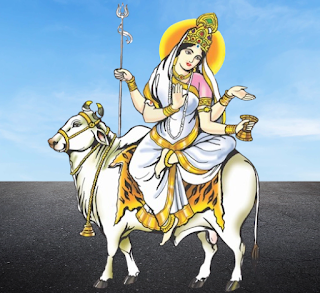In this article, I am going to tell you about Chaitra Navratri
Chaitra Navratri, additionally referred to as Vasant Navratri is a Hindu pageant celebrated inside the Hindu month of Chaitra, which commonly falls in March or April consistent with the Gregorian calendar. The term "Chaitra" refers to the Hindu month, and "Navratri" translates to "nine nights," signifying the duration of the festival.
Chaitra Navratri holds immense significance in Hindu culture and spirituality for several reasons:
Worship of Goddess Durga: Chaitra Navratri is dedicated to the worship of Goddess Durga and her nine divine forms, known as Navadurga. Devotees believe that during these nine days, the goddess descends to Earth to bless her devotees and rid the world of evil forces.
Spiritual Renewal: Chaitra Navratri is a time for spiritual introspection, purification, and renewal. Devotees engage in prayers, meditation, and fasting to cleanse their minds, bodies, and souls, and seek the blessings of the divine mother for spiritual growth and enlightenment.
Celebration of Spring: Chaitra Navratri marks the onset of the spring season in India, symbolizing new beginnings, growth, and fertility. It is a time when nature comes alive with blooming flowers, lush greenery, and vibrant colors, mirroring the rejuvenation of life and the promise of abundance.
Cultural Significance: Chaitra Navratri is celebrated with great enthusiasm and fervor across India, with communities coming together to perform traditional rituals, dances, and music. It is a time of joyous festivities, social gatherings, and cultural exchanges, strengthening bonds of unity and harmony among people.
Observance of Vrat and Puja: During Chaitra Navratri, devotees observe vrat (fasting) and perform puja (ritual worship) to honor Goddess Durga and seek her divine blessings. Special rituals are conducted each day to invoke the blessings of the Navadurga and receive their grace and protection.
Chaitra Navratri is a time of reverence, devotion, and celebration, signifying the triumph of good over evil and the eternal victory of righteousness. It is an occasion for spiritual upliftment, cultural enrichment, and communal harmony, reminding people of the divine presence in their lives and the eternal cycle of creation, preservation, and dissolution.
- The 9 varieties of Goddess Durga worshipped in the course of Chaitra Navratri are:
- Maa Shailputri
- Maa Chandraghanta-

Maa Chandraghanta, Maa Chandraghanta, the third form of Goddess Durga, symbolizes bravery and grace. Worshipped on the third day of Chaitra Navratri, she blesses devotees with strength, protection, and peace. Adorned with a crescent moon on her forehead, she rides a lion and holds various weapons. Devotees seek her blessings to overcome obstacles and lead a prosperous life. They offer prayers and wear yellow attire, signifying happiness and prosperity.
 |
| Maa Shailputri |
Chaitra Navratri, starting on April 9, 2024, commences with Ghatasthapana Puja, worshipping Maa Shailputri. This ritual signifies the divine mother's presence, adorned with auspicious items like mango leaves and coconut. Devotees seek blessings for health and prosperity, adorning red attire and offering prayers for strength and protection.
Maa Brahmacharini-
 |
| Maa Brahmacharini |
 |
| Maa Kushmanda, |
 |
| Skanda Mata |
 |
| Maa Katyayani |
 |
| Maa Kaalratri |
 |
| Maa Mahagauri |
Frequently Ask Questions
- Maa Shailputri
- Maa Brahmacharini
- Maa Chandraghanta
- Maa Kushmanda
- Skanda Mata
- Maa Katyayani
- Maa Kaalratri
- Maa Mahagauri
- Maa Siddhidatri
Is fasting mandatory during Chaitra Navratri? Fasting during Chaitra Navratri is considered auspicious and is observed by many devotees as a form of spiritual discipline. However, it is not mandatory, and individuals may choose to participate according to their personal beliefs and health considerations.
How does Chaitra Navratri conclude? Chaitra Navratri concludes on the ninth day, which is celebrated as Rama Navami, the birth anniversary of Lord Rama. Special prayers and rituals are conducted on this day to honor Lord Rama and seek his blessings.
What are the colors associated with each day of Chaitra Navratri? Different colors are associated with each day of Chaitra Navratri, representing the various forms of Goddess Durga worshipped on those days. These colors are believed to invoke specific energies and qualities associated with each deity.


